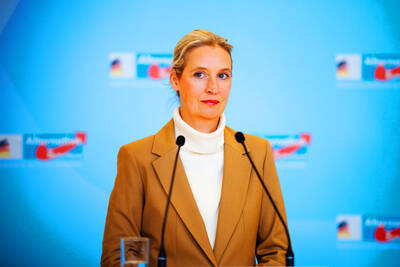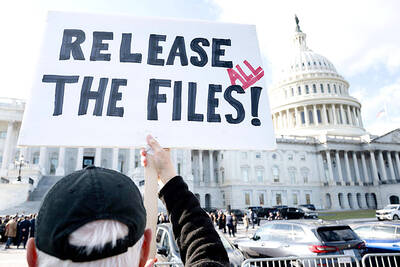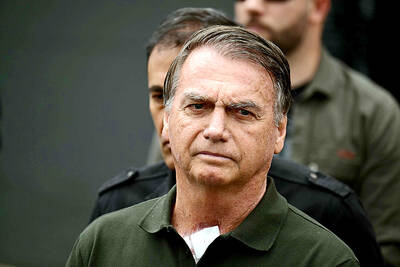Wives and mothers of political prisoners completed an unprecedented week of protest marches in Havana in defiance of the authorities to press for the release of dissidents held for seven years.
“I hope that these [marches] will be the last ones, that there won’t be an eighth anniversary,” said Laura Pollan, the leader of the so-called Ladies in White, as they set out on a march on Sunday to the offices of the National Assembly.
It is the only opposition group on the island that regularly takes their protests to the street, challenging the limits of the Americas’ only one-party communist regime’s tolerance for dissent.
Pro-government counter-protesters were out in force all week, including on Sunday, heckling the women and shouting slogans like “the streets belong to the revolutionaries” and “the streets are with Fidel.”
The women, who march dressed in white and carrying white gladiolas, are demanding the release of the 53 political prisoners who remain locked up seven years after the government’s last major crackdown.
Twenty-two other prisoners have been released for health reasons since the March 2003 arrests, which the opposition calls “Black Spring.”
The women were accompanied by Reyna Luisa Tamayo, the mother of political prisoner Orlando Zapata, who died at age 42 in a hunger strike on Feb. 23 to protest prison conditions. She said her son was tortured and called his death a “premeditated murder;” Cuban authorities denied the claims.
Journalist and psychologist Guillermo Farinas launched another hunger strike the day after Zapata’s death, demanding the release of 26 political prisoners who are in poor health. He has been hospitalized in the city of Santa Clara, 280km east of Havana.
The protests have aroused strong criticism of the Cuban regime in many European countries, the US and among international rights organizations, but Havana has so far dismissed it all as a political campaign.
“It is, really, a colossal deception operation, the longest, most costly and dirtiest in history. It has lasted now half a century,” National Assembly speaker Ricardo Alarcon said.
Departing from a Catholic church, where they first attended mass, the Ladies in White marched through various Havana neighborhoods each day last week, shouting “Liberty.”
On Wednesday, however, in the Parraga district of Havana, the march was interrupted by authorities, who forced the women onto two buses after they had been shoved and hit by government supporters.
The incident prompted the government to reinforce the small group of security agents that normally accompany the marches to prevent incidents, establishing a large police cordon in the subsequent marches.
The government, which accuses the women of being “mercenaries,” and “the point of the spear” of US sponsored “subversion” on the island, carried its version of events for several days in television news shows, which was unusual.
“As a result, even though they speak badly of us, the entire Cuban people know that the Ladies in White are in the street asking for the freedom of our loved ones,” Pollan said.

A feud has broken out between the top leaders of the far-right Alternative for Germany (AfD) party on whether to maintain close ties with Russia. The AfD leader Alice Weidel this week slammed planned visits to Russia by some party lawmakers, while coleader Tino Chrupalla voiced a defense of Russian President Vladimir Putin. The unusual split comes at a time when mainstream politicians have accused the anti-immigration AfD of acting as stooges for the Kremlin and even spying for Russia. The row has also erupted in a year in which the AfD is flying high, often polling above the record 20 percent it

Ecuadorans are today to vote on whether to allow the return of foreign military bases and the drafting of a new constitution that could give the country’s president more power. Voters are to decide on the presence of foreign military bases, which have been banned on Ecuadoran soil since 2008. A “yes” vote would likely bring the return of the US military to the Manta air base on the Pacific coast — once a hub for US anti-drug operations. Other questions concern ending public funding for political parties, reducing the number of lawmakers and creating an elected body that would

The latest batch from convicted sex offender Jeffrey Epstein’s e-mails illustrates the extraordinary scope of his contacts with powerful people, ranging from a top Trump adviser to Britain’s ex-prince Andrew. The US House of Representatives is expected to vote this week on trying to force release of evidence gathered on Epstein by law enforcement over the years — including the identities of the men suspected of participating in his alleged sex trafficking ring. However, a slew of e-mails released this week have already opened new windows to the extent of Epstein’s network. These include multiple references to US President Donald

CHARGES: The former president, who maintains his innocence, was sentenced to 27 years and three months in prison for a failed coup bid, as well as an assassination plot Far-right former Brazilian president Jair Bolsonaro is running out of options to avoid prison, after judges on Friday rejected his appeal against a 27-year sentence for a botched coup bid. Bolsonaro lost the 2022 elections and was convicted in September for his efforts to prevent Brazlian President Luiz Inacio Lula da Silva from taking power after the polls. Prosecutors said the scheme — which included plans to assassinate Lula and a top Brazilian Supreme Court judge — failed only due to a lack of support from military top brass. A panel of Supreme Court judges weighing Bolsonaro’s appeal all voted to uphold